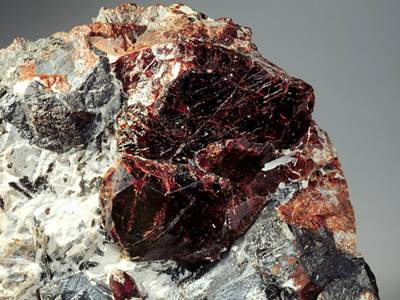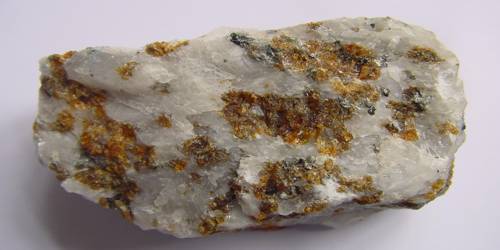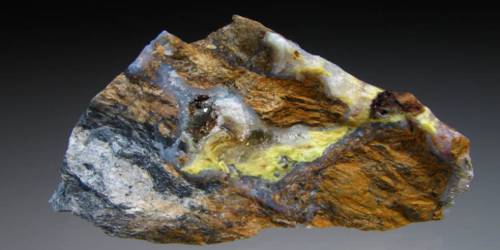Chondrodite is a nesosilicate mineral with formula (Mg, Fe)5(SiO4)2(F, OH, O)2. It is the most common and most well-known member of the Humite Group of minerals. Although it is a fairly rare mineral, it is the most frequently encountered member of the humite group of minerals.
It is formed in hydrothermal deposits from locally metamorphosed dolomite. It is also found associated with skarn and serpentinite. It was discovered in 1817 on Mt. Somma, part of the Vesuvius complex in Italy, and named from the Greek for “granule”, which is a common habit for this mineral.
General Information
- Category: Nesosilicates
- Formula: (Mg,Fe)5(SiO4)2(F,OH,O)2.
- Crystal system: Monoclinic
- Crystal class: Prismatic (2/m) (same H-M symbol)

Properties
Chondrodite is not a particularly common mineral and is never seen in abundance. It is found in hydrothermal deposits and contact and regionally metamorphosed dolomitic limestones, most notably skarn deposits and in some serpentinite rocks.
- Formula mass: 351.6 g/mol
- Color: Yellow, orange, red or brown, rarely colorless
- Crystal habit: Typically anhedral masses or grains, or as plates flattened on {010}, {001}
- Cleavage: Poor to good on (001)
- Fracture: Conchoidal to Uneven
- Tenacity: Brittle
- Mohs scale hardness: 6 to 6.5
- Luster: Vitreous to Greasy
- Streak: Grey or Yellow
- Diaphaneity: Translucent
- Specific gravity: 3.1 to 3.26
Structure
The chondrodite structure is based on a slightly distorted hexagonal close-packed array of anions O, OH and F with metal ions in the octahedral sites resulting in zigzag chains of M(O, OH, F)6 octahedra. Chains are staggered so that none of the independent tetrahedral sites occupied by Si has OH or F corners. Half of the octahedral sites are filled by divalent cations, principally Mg, and one-tenth of the tetrahedral sites are filled by Si.
Occurrence: In contact metamorphic zones, in limestones and dolostones, associated with felsic to alkalic plutonic rocks, especially with Fe-B-F metasomatism; in a carbonatite.
Environment
Chondrodite is found largely in metamorphic contact zones between carbonate rocks and acidic or alkaline intrusions where fluorine has been introduced by metasomatic processes. It is formed by the hydration of olivine, (Mg, Fe2+)2SiO4, and is stable over a range of temperatures and pressures that include those existing in a portion of the uppermost mantle.
Titanian chondrodite has been found as inclusions in olivine in serpentinite in West Greenland, where it is associated with clinohumite, olivine, magnesite, magnetite and Ni-Co-Pb sulfides in a matrix of antigorite.
Information Source;
















